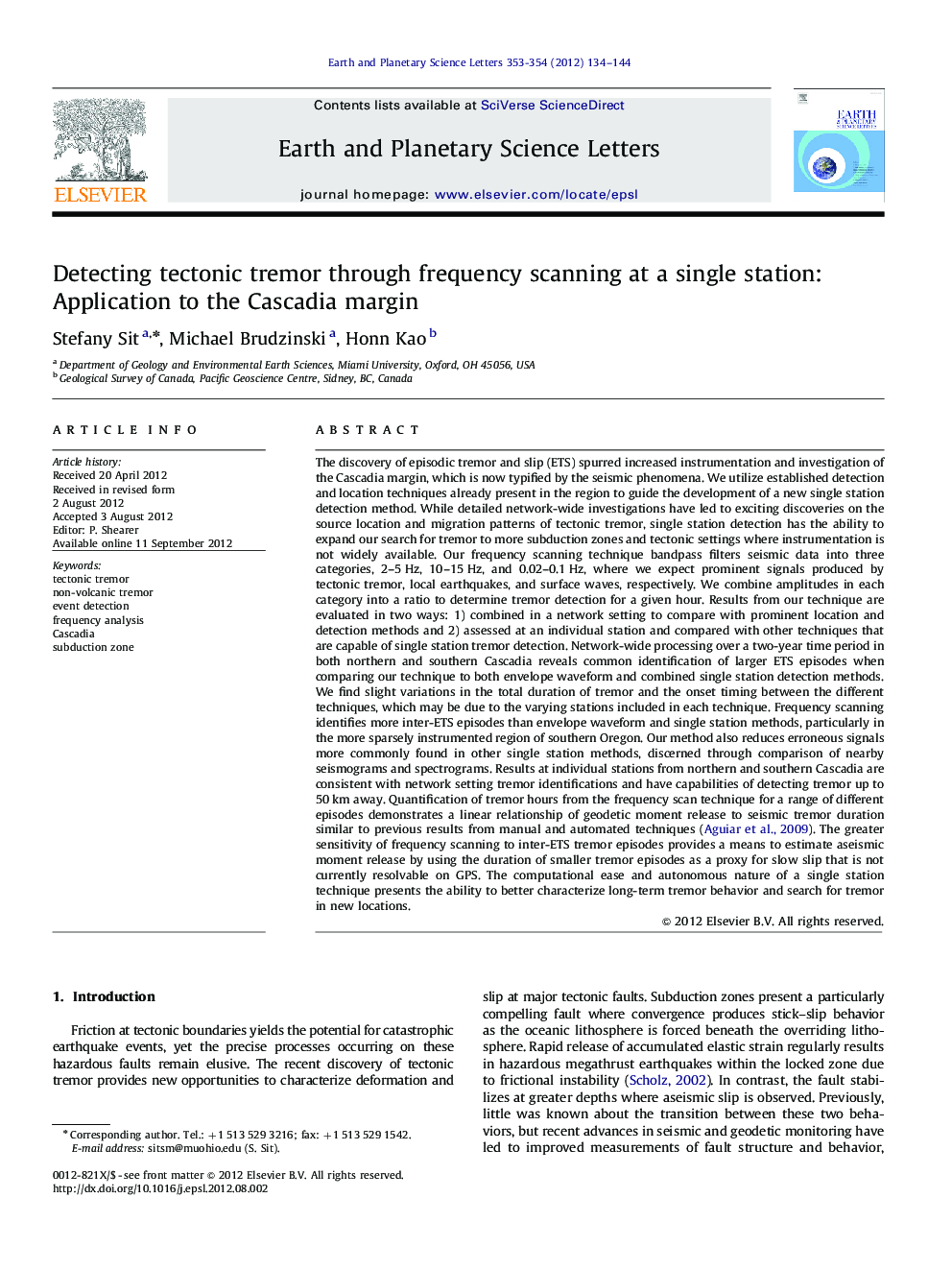| کد مقاله | کد نشریه | سال انتشار | مقاله انگلیسی | نسخه تمام متن |
|---|---|---|---|---|
| 6430484 | 1634796 | 2012 | 11 صفحه PDF | دانلود رایگان |

The discovery of episodic tremor and slip (ETS) spurred increased instrumentation and investigation of the Cascadia margin, which is now typified by the seismic phenomena. We utilize established detection and location techniques already present in the region to guide the development of a new single station detection method. While detailed network-wide investigations have led to exciting discoveries on the source location and migration patterns of tectonic tremor, single station detection has the ability to expand our search for tremor to more subduction zones and tectonic settings where instrumentation is not widely available. Our frequency scanning technique bandpass filters seismic data into three categories, 2-5Â Hz, 10-15Â Hz, and 0.02-0.1Â Hz, where we expect prominent signals produced by tectonic tremor, local earthquakes, and surface waves, respectively. We combine amplitudes in each category into a ratio to determine tremor detection for a given hour. Results from our technique are evaluated in two ways: 1) combined in a network setting to compare with prominent location and detection methods and 2) assessed at an individual station and compared with other techniques that are capable of single station tremor detection. Network-wide processing over a two-year time period in both northern and southern Cascadia reveals common identification of larger ETS episodes when comparing our technique to both envelope waveform and combined single station detection methods. We find slight variations in the total duration of tremor and the onset timing between the different techniques, which may be due to the varying stations included in each technique. Frequency scanning identifies more inter-ETS episodes than envelope waveform and single station methods, particularly in the more sparsely instrumented region of southern Oregon. Our method also reduces erroneous signals more commonly found in other single station methods, discerned through comparison of nearby seismograms and spectrograms. Results at individual stations from northern and southern Cascadia are consistent with network setting tremor identifications and have capabilities of detecting tremor up to 50Â km away. Quantification of tremor hours from the frequency scan technique for a range of different episodes demonstrates a linear relationship of geodetic moment release to seismic tremor duration similar to previous results from manual and automated techniques (Aguiar et al., 2009). The greater sensitivity of frequency scanning to inter-ETS tremor episodes provides a means to estimate aseismic moment release by using the duration of smaller tremor episodes as a proxy for slow slip that is not currently resolvable on GPS. The computational ease and autonomous nature of a single station technique presents the ability to better characterize long-term tremor behavior and search for tremor in new locations.
⺠We develop frequency scanning to allow for single station tectonic tremor detection. ⺠Our detections are in good agreement with previously established methods. ⺠A single station can identify tremor up to 50 km away during large and small ETS. ⺠We improve inter-ETS tremor detections compared to other single station methods. ⺠Our technique quantifies tremor hours that area proxy for slow slip moment.
Journal: Earth and Planetary Science Letters - Volumes 353â354, 1 November 2012, Pages 134-144